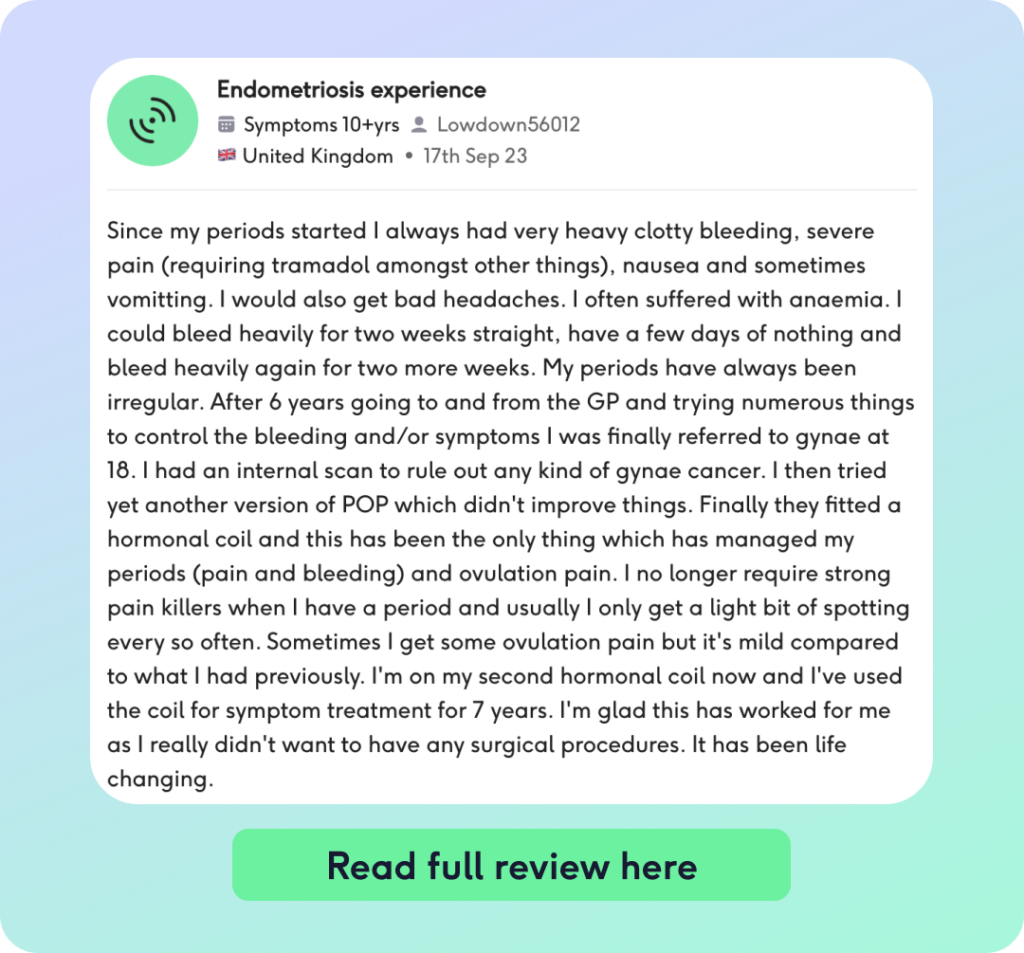
Blood clots in your period: is it normal?
In this article
What's the lowdown?
Clots are balls of blood that you might see during your period
Not all clots are worrying and they can be common for some menstruators
Generally, clots larger than a 10p coin are not normal
People with conditions that cause heavy menstrual bleeding might more commonly experience clots
What are blood clots during your period? Are blood clots in a period normal?
Have you ever looked down while changing your pad and seen a red clump? Sometimes big, sometimes little?
Well, that is a blood clot! A clot is a ball of semi-solid blood that sticks together, usually when the blood accumulates before exiting the uterus and vagina. And yes, they can be a common part of a period. But not all blood clots are normal.
During our period cycle, we lose about 2-3 tablespoons of blood. If that isn’t clear enough, that is about 25 – 80 ml of blood, meaning anything over this amount is considered heavy menstrual bleeding1 . I mean who measures their bleeding this way? This is why the National Institute of Clinical Excellence has changed its definition of heavy bleeding. So if you’re worried about heavy periods and what signs to look out for, we’ve got you covered.
But now back to clots. Every cycle is unique, some cycles might be clottier than others. It does not always mean something is wrong. Usually, you might find clots on your pad or clinging to your tampon (or any other period product) on the heaviest day of your period, so usually in the first 3 days of your cycle.
Some people might never see clots during their period, but that doesn’t mean anything is wrong either!
What does my blood clot mean?
Jelly like clots
Jelly-like blood clots during your period, is it normal?
Jelly-like clots are generally what the blood clot chunk should look and feel like. These should be less than 2.5cm or to make things easier, the size of a 10p coin. You might see just one or maybe many clots during your period. The colour of the clots might change as the period continues: from bright red, slowly progressing to dark brown over your cycle. This is because old blood appears darker than fresh red blood 2.
Large clots
So large blood clots during a period are anything larger than a 10p coin, or to get mathematical 2.5cm3. If you are passing anything around this size or bigger, it’s time to speak to a doctor. This is generally what heavy bleeding blood clots look like.
Black clots
Black is definitely not a colour we associate with our periods. Understandably, it can be very scary to see anything black come out of your vagina. Period black blood clots are generally just very VERY old blood4 that is finally leaving the vagina. Usually, this isn’t worrying BUT if you are also experiencing very painful periods, pain during sex or chronic pelvic pain then please see a healthcare professional, as combined with black blood, these may be symptoms of endometriosis.
On the other hand, it might be because you have left something, like a tampon, inside your vagina for a bit longer than recommended. So you might notice some black discharge and clots forming. But you will also notice a bad smell, rash or itching from your vagina. Please see a healthcare professional if you experience this.
Clots with heavy bleeding
A sign of heavy bleeding is passing large clots, larger than a 10p coin. People with conditions associated with heavy bleeding, such as endometriosis, fibroids or adenomyosis, do tend to see blood clots in their cycle.
Palm-sized blood clots during period
Well, the average palm size is about 7cm5, so a clot this size is a cause for concern. The size is simply too large and most likely means something else is going on. Please speak to a doctor!
Could my clots mean a miscarriage?
Pregnancy is a period-free zone for 9 months! So generally, any bleeding or clots during this time might raise alarm bells. Before you freak out, sometimes women might notice some light vaginal bleeding at the start of the pregnancy which can be a sign of implantation of the fertilised egg into the wall of the womb.
A miscarriage is pregnancy loss before 23 weeks. Your body might experience a miscarriage with bleeding, cramping and loss of pregnancy symptoms. With bleeding, you could also see clots, from small to big6.
The only definitive way to know if you are having a miscarriage is to have an ultrasound scan done to check the pregnancy. So please don’t freak out just yet, it might not always be bad news. Reach out to your GP or gynaecology department and get a scan booked.
What next? When do I see my GP?
Is anything off my baseline? Are my periods interfering with my daily living? Am I pregnant and bleeding? Answering yes to these questions is a good sign to get some medical advice.
If you’re thinking, I don’t want to talk to a doctor about my period, it’s embarrassing. Firstly it is definitely not! It is a natural human phenomenon, and we have them with pride. But if this is a worry for you, then you’ve come to the right place! The Lowdown GPs, are warm and welcoming women’s health experts who will listen without judgement so you can get the answers and support you need.
Our medical review process
This article has been medically reviewed for factual and up to date information by a Lowdown doctor.


